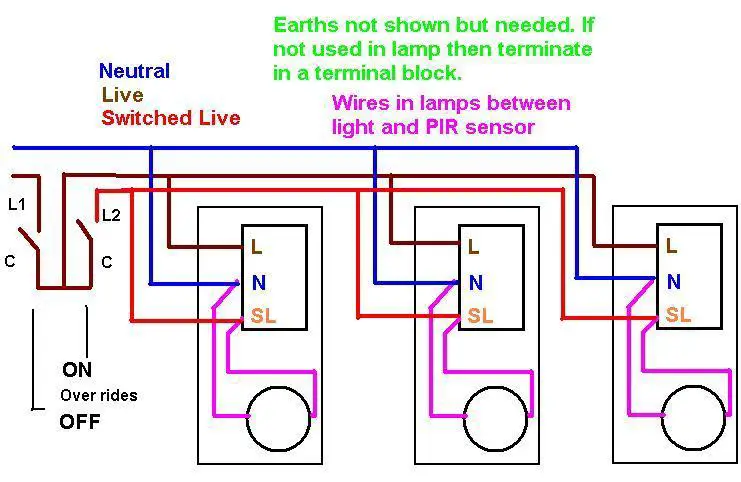I have 3 external welcome lights on my house. They are all operated from a single on / off switch inside the house.
I am interested in changing these to be PIR-enabled, so that they will turn on when I am coming home in the dark (sooner than we think).
However, I've been told (in a very brief conversation with an Electrician) that my choice would be simply - leave as is or have PIR light fittings installed.
In an ideal world... I'd like to change my light fittings to PIR-enabled lights, so they switch on when movement is detected, but also retain an override to the on position (or both on and off) so the lights aren't solely activated by the PIR function.
Is this normal practice? Would I need a second switch to control the override aspect I'd like, or might I get a switch with a three way rocker - like, maybe, up = off, middle = PIR control and down = on?
I am interested in changing these to be PIR-enabled, so that they will turn on when I am coming home in the dark (sooner than we think).
However, I've been told (in a very brief conversation with an Electrician) that my choice would be simply - leave as is or have PIR light fittings installed.
In an ideal world... I'd like to change my light fittings to PIR-enabled lights, so they switch on when movement is detected, but also retain an override to the on position (or both on and off) so the lights aren't solely activated by the PIR function.
Is this normal practice? Would I need a second switch to control the override aspect I'd like, or might I get a switch with a three way rocker - like, maybe, up = off, middle = PIR control and down = on?


